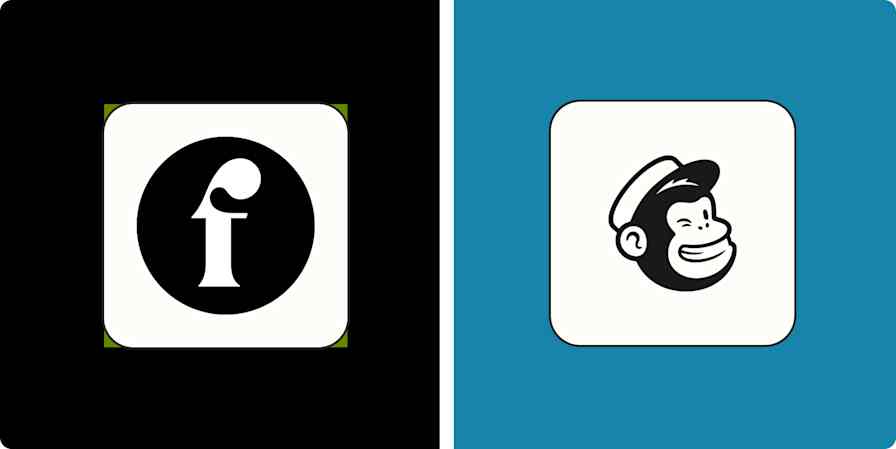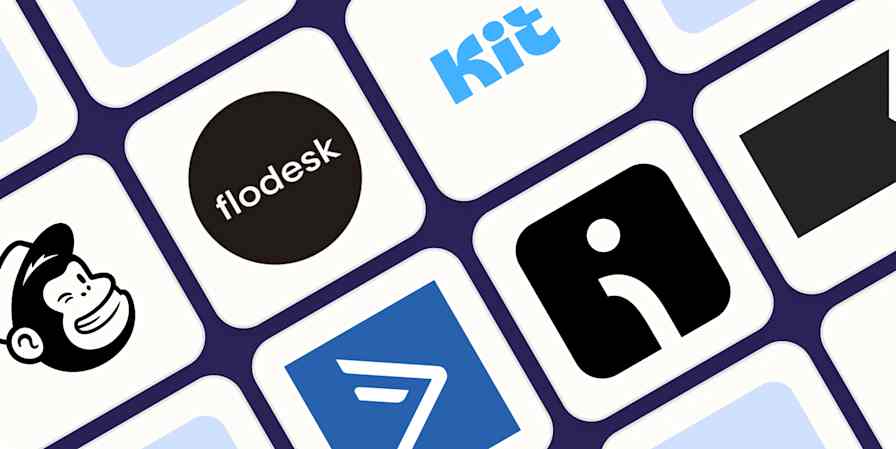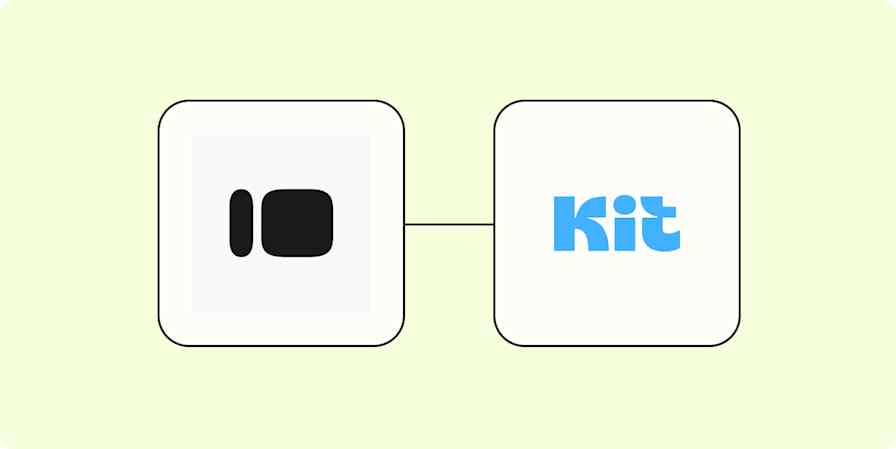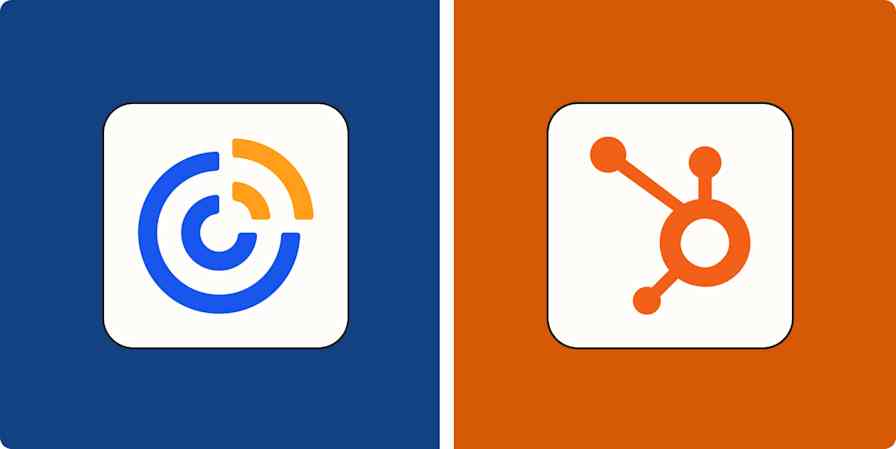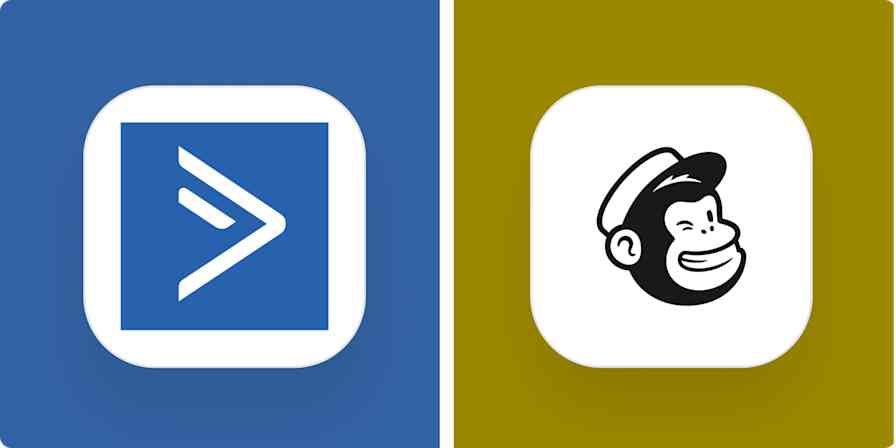For years, I used ActiveCampaign as part of my web agency's sales process to track sales prospects and send follow-ups. More recently, as a writer, I've found myself firmly in Kit's demographic of creators, and have experimented with its range of features.
Both ActiveCampaign and Kit (formerly ConvertKit) are solid marketing tools, but they excel at different things.
For this article, I explored the latest features of both apps and spent time testing each one to compare them head-to-head. Here's what I found.
Table of contents:
Kit has unbeatable audience growth and monetization features
Both offer impressive analytics, but ActiveCampaign is more powerful
Kit vs. ActiveCampaign at a glance
Here's a high-level overview of the difference between these two tools:
Kit is ideal for solo creators looking to grow and monetize their email list. With audience-building tools you won't find anywhere else, it's the best platform for one-person businesses like authors, musicians, and solo entrepreneurs.
ActiveCampaign is best for businesses with complex needs, like eCommerce and high-ticket sales. While it's relatively pricey, it offers world-class email marketing, sales automation, and CRM capabilities in a single platform.
| Kit | ActiveCampaign |
|---|---|---|
Ease of use | ⭐⭐⭐⭐ Emails and landing pages are intuitive; everything is designed for non-techies. | ⭐⭐⭐ Sometimes feels more complex than it needs to be; aims for breadth of features over simplicity. |
Automation | ⭐⭐⭐⭐ Less powerful than ActiveCampaign; however, setting up simple automations is easier and quicker. | ⭐⭐⭐⭐⭐ World-class email automation capabilities, made easier with hundreds of automation templates. |
Audience growth and monetization | ⭐⭐⭐⭐⭐ An unbeatable set of tools to grow and monetize your audience, including newsletter recommendations, programmatic ads, and sponsors. | ⭐⭐⭐ You're on your own when growing your list; but once you have an audience, you can nurture subscribers with tags and automations. |
Sales and eCommerce | ⭐⭐⭐ No CRM features, but it integrates natively with eCommerce tools like Shopify and Stripe; Kit Commerce makes digital sales easy. | ⭐⭐⭐⭐ Built-in sales CRM; advanced features, like lead scoring and predictive sending, help nurture and upsell prospects. |
AI features | ⭐ You can use Kit's AI to create subject lines, but that's about it. | ⭐⭐⭐⭐⭐ Truly useful AI features, including one-click campaign generation, branded AI templates, and AI-generated automations. |
Analytics | ⭐⭐⭐ Relatively barebones analytics on the entry-level plan; the Creator Pro plan offers an Insights dashboard that goes deeper into acquisition, sales, and engagement. | ⭐⭐⭐⭐⭐ Slick analytics dashboard and endless reporting options, like marketing revenue, conversion attribution, and deal forecasting—plus custom reports. |
Pricing | ⭐⭐⭐⭐ Excellent free plan if you have fewer than 10,000 contacts; paid plans, starting at $29/month for 1,000 contacts, are relatively affordable. You get unlimited users on the $59/month Creator Pro plan and unlimited email sends on every plan (even the free plan). | ⭐⭐⭐ Starts at $15/month (1,000 contacts) for basic features; strict limits on collaborators, automation actions, and email sends mean most users will want the $49/month or $79/month plans. |
Integrations | ⭐⭐⭐⭐⭐ 130+ native integrations, plus more in the Kit App Store; also integrates with Zapier. | ⭐⭐⭐⭐⭐ 970+ integrations; also integrates with Zapier. |
Kit is remarkably easy to use
Kit's website is plastered with the faces of famous creators, like author Tim Ferriss, actor Matthew McConaughey, and rapper and producer Lil Jon. (Fun fact: Lil Jon, creator of party anthems like Get Low and Turn Down for What, now uses Kit to send a newsletter called "Wellness Wednesdays" with affirmations and life tips.) It's clear from the get-go that this isn't your average email marketing tool: it's aimed at an audience that's more focused on building and monetizing than fiddling with designs, automations, and workflows.
Kit is an exceptionally straightforward tool. Let's say you're a YouTuber, for example, and you want to launch a landing page to collect email subscribers. This process takes about five minutes in Kit: you just pick a landing page template, tweak the form options, and click publish. Then, you can quickly get down to the business of collecting subscribers by sharing your landing page (which Kit hosts for you).

Designing and sending emails is similarly template-driven, as is creating automations. And you can use Kit's Snippets feature to speed up the email creation process by creating reusable blocks of content—perfect for promotions, calls-to-action, or any other text you find yourself frequently including in your emails.
A few other ways Kit makes life easy:
You can create different opt-in incentives for each form.
You can click a button to resend emails to anyone who didn't open it the first time.
You can edit your automation and email content in a single window, rather than jumping back and forth between screens.
ActiveCampaign, meanwhile, is designed for breadth of features, and that often comes at the cost of simplicity. For example, ActiveCampaign doesn't include pre-designed forms directly within its landing page templates like Kit. Instead, you need to create your forms in another area of the platform, then add them separately.

ActiveCampaign does occasionally outshine Kit in ease-of-use when it comes to email design features. It offers an intuitive drag-and-drop email builder, which Kit—in the interest of keeping things simple and boosting deliverability rates—doesn't offer. ActiveCampaign also offers 250+ email templates versus Kit's 15 templates (though you can access more via the Kit Marketplace).
ActiveCampaign's AI features are incredibly useful
Plenty of email marketing tools pay lip service to AI but don't actually do all that much (see: MailerLite). Kit falls into that category, too—although to be fair, it doesn't position itself as an AI-forward app. Still, I was surprised to see that a simple AI subject line generator is pretty much the extent of Kit's AI capabilities.
Contrast that with ActiveCampaign, which embeds AI throughout its app. Whether you're designing emails, creating automations, or reviewing analytics, you'll see ActiveCampaign's ubiquitous "magic star" icon indicating AI productivity-boosting features.
For example, when you're spinning up a new email campaign, you'll see an option to generate a campaign in one click just by describing what you need.

In my tests, I didn't get any emails that I'd be comfortable sending without editing. But you can use AI to edit the text, too, or just use your AI-generated campaign as a jumping-off point to save time before tweaking manually.

If you're scheduling your email campaigns in advance, you can use AI to schedule them on days that your audience is most likely to read them. These aren't the sort of "universal" best send times you'll find when you look up boilerplate email marketing tips; instead, ActiveCampaign's AI makes personalized recommendations based on everything it knows about your audience's demographics and behavior.

You can also use AI to quickly create a brand kit. ActiveCampaign can scan your business's URL and pull your logo, brand palette, and fonts to make sure your emails have precisely the same look and feel as your website.

ActiveCampaign also uses AI to autosuggest audience segments that are likely to be receptive targets for campaigns. You can choose prebuilt AI segments like Engaged subscribers, Disengaged subscribers, and New subscribers, and refine them with AI-powered filters like predictive geography and predictive attribution.

You can also use AI to improve your automation experience, which I'll explore in the next section.
ActiveCampaign has more robust automation capabilities
ActiveCampaign is all about advanced marketing automation, so—no surprise—it wins this round. Want to trigger a series of emails when customers subscribe to a list? No problem. But you can also go much further: for example, ActiveCampaign can funnel subscribers into different automations based on nuances like customer engagement and sentiment.
You might assume only big brands rely on advanced automation features like this, but ActiveCampaign's Customer Stories page is also full of small companies (especially eCommerce brands) that use its automation features to boost sales. For example, Swim University, a website selling pool and hot tub supplies, uses ActiveCampaign to personalize emails based on customers' pool features, filter types, and location.
Putting all this together can be complex. Fortunately, ActiveCampaign's wide selection of automation templates means that unless you need something very custom, you won't have to start from scratch.

ActiveCampaign offers hundreds of automation templates, most of which are highly specific: fitness coaches can find a workout-oriented email series, while real estate agents can access drip campaigns for new homeowners.

Even more impressive is how ActiveCampaign weaves AI into the automation-building experience. In the unlikely event that you can't find a prebuilt automation template that works for you, ActiveCampaign will use AI to create a personalized automation for you based on your goals and brand details.

And if you're looking for something simpler—like a basic automated follow-up email, for example—ActiveCampaign makes that painless with AI, too. You can schedule a one-click AI follow-up email immediately after sending a campaign.

Kit's visual automations builder is less powerful than what ActiveCampaign offers, but it comes with creator-oriented automations like Launch a new digital product and Run an evergreen newsletter.

For simple automations, Kit gives you two additional options: sequences and rules. Sequences are perfect for uncomplicated email automations, like welcome sequences. And rules are "if this, then that" style triggers for simple actions, like subscribing users to a certain sequence after they click a link.

Kit has unbeatable audience growth and monetization features
Kit's mission is more holistic than just email; it wants to help its customers grow and monetize their audience. This means that Kit's suite of tools is unlike what you'll see in most email marketing apps. The first sign that things are different is the Creator profile, which looks a bit like Substack: it's a simple site that explains who you are, allows people to subscribe to your newsletter, and includes an archive of past emails. Here's an example from "growthitect" Tyler Suomala.

By creating a profile—and upgrading to the Creator Pro plan—you get access to Kit's Creator Network, which allows you to search for creators with similar audiences and cross-promote your newsletter. Dan Go, a fitness coach, says that the Creator Network resulted in a 22,000-subscriber boost to his newsletter.

Kit also offers a powerful set of tools to monetize your audience:
The Kit Sponsor Network places ads in your newsletter.
With Paid Recommendations, you can earn commissions for recommending other newsletters.
Kit Commerce helps you sell and deliver digital products like eBooks and courses.
Paid newsletter subscriptions let you charge subscribers in exchange for premium content.
Tip jars give your audience a way to support you on a one-off basis.
It's hard to overstate how revolutionary this vertical integration is for creators. In the past, entrepreneurs hoping to monetize their lists had to string together a messy array of tools: SparkLoop for paid recommendations, LiveIntent for programmatic ads, Patreon for subscriptions and tips, and Gumroad for digital products.
Kit simplifies all of this. To monetize your newsletter with programmatic ads, for example, you can just drag and drop an ad module into your email.

Once revenue starts rolling in, it's easy to see campaign details like clicks, impressions, and revenue directly in your Kit dashboard.

With ActiveCampaign, you're on your own when growing your list, and there aren't any built-in monetization features. Your best bet is to use ActiveCampaign's tagging and automation options to nurture subscribers toward a sale. For example, you can automatically tag subscribers who frequently engage with your emails; from there, you can add them to an automation that nurtures them into customers.
ActiveCampaign is better for sales and eCommerce
If you're running a larger brand or selling high-ticket items—especially if you do any lead generation or sales activity—you'll want to go with ActiveCampaign.
ActiveCampaign offers sales-friendly features like lead scoring, to gauge which customers are most engaged, and predictive sending, which can boost sales by catching customers at the right time. Meanwhile, ActiveCampaign integrates with Shopify, BigCommerce, Podia, ThriveCart, and other eCommerce tools, and its eCommerce-focused automation templates make it simple to follow up with customers when they make a purchase or abandon their carts—or upsell them related items.

ActiveCampaign also doubles as a sophisticated sales CRM, making it ideal for selling high-ticket products that benefit from sales pipelines and regular follow-up. You can seamlessly tie your lead activity into your automations to nurture prospects and keep your deals moving through the pipeline.

Kit isn't well-suited to sales or high-ticket eCommerce; it doesn't come with a CRM, so there's a limit to the control you have over each subscriber's journey.
However, Kit's simplicity makes it a good option for the right type of user. Kit integrates with all the big eCommerce tools, like Shopify and Stripe, and its Kit Commerce feature makes selling digital products easy. If you're selling an online service or a low-ticket digital product, Kit may be the right fit.

Both offer impressive analytics, but ActiveCampaign is more powerful
Kit's entry-level Creator plan provides a relatively barebones set of reporting features: enough to know how your email campaigns and automations are performing, but not much more. You'll get access to basic stats like unsubscribes, complaints, and bounces. (I do like Kit's Engagement Funnel chart, which succinctly displays the percentage of users that open and click your emails).

If you upgrade to the Creator Pro plan, you'll get access to the Kit's new Insights dashboard, which provides a much more detailed level of analytics. You can see which forms and landing pages drive conversions, how engaged each segment of subscribers is, and how long it takes the average subscriber to buy a product.

While Kit's Insights dashboard is useful and incredibly easy to understand, ActiveCampaign gives you more power and flexibility. You'll find endless analytics options, all packaged into a slick reporting dashboard.

Want to see an overview of all your deals, including trends over time, average deal size, and individualized stats for each deal owner? ActiveCampaign's Deal Overview report gives you all of this in a single window.

You'll also find reports focused on marketing revenue, eCommerce, predictive content, and conversion attribution. And if you want to see which email clients your subscribers are using or how a certain automation campaign is impacting signups and sales, ActiveCampaign has reports for that too—plus the option to create custom reports for anything else you might need.
It's also worth mentioning that ActiveCampaign is integrating an AI "campaign reporting co-pilot" into its analytics with a feature called ActiveInsights. Right now, this tool is still in beta, but you'll soon be able to interact with your analytics using prompts and questions (like "Why is my bounce rate higher than normal?").
Kit is more budget-friendly and offers a generous free plan
If you're looking for the most affordable way to build an email list, it's tough to top Kit's free plan—it's more generous than any other option I've seen. You get up to 10,000 subscribers for free, along with one visual automation and one email sequence. If you're just starting out and your needs are relatively simple, this might be enough to keep you going for years.
To get unlimited automations and email sequences—and to access Kit's advanced creator tools—you'll need to upgrade to the Creator plan for $29/month (1,000 subscribers). The $59/month Creator Pro plan lets you add unlimited users, plus subscriber engagement scoring, deliverability reporting, and deeper analytics.
ActiveCampaign doesn't have a free plan, though it does offer a 14-day trial. And while plans used to start at $39/month for 1,000 contacts, you can now access ActiveCampaign's basic email marketing tools for $15/month on the Starter plan. The $49/month Plus plan gives you more powerful automations, landing pages, and revenue reporting, while the $79/month Pro plan lets you add up to three users and gives you advanced features like conditional content, predictive sending, and conversion tracking. There's also an Enterprise plan for $145/month, which gives you advanced security features and premium CRM integrations.
One important point of comparison: ActiveCampaign imposes email send limits and Kit doesn't. Depending on your ActiveCampaign plan, you'll be limited to sending a max of 10,000-15,000 emails per month (assuming you have 1,000 contacts). Beyond that, you have to pay overage fees.
Both have a variety of integrations
Both Kit and ActiveCampaign offer an impressive number of integrations: ActiveCampaign connects with 970+ apps, while Kit offers 130+.
In addition to Kit's standard third-party integrations, the new Kit App Store features a handful of in-house apps with extra-smooth integration. For example, if you install the Circle app, you'll get subscriber synchronization, automatic tagging, custom fields, and the ability to embed Circle posts and events directly in Kit emails.
With Zapier, you can connect both ActiveCampaign and Kit to thousands of other apps, creating fully automated systems for your email marketing. Learn more about how to automate ActiveCampaign and how to automate Kit, or use one of these pre-made workflows to get started.
Add or update ActiveCampaign contacts for new Acuity Scheduling appointments
Add or update ActiveCampaign contacts for new Calendly invitees
Add new Jotform form respondents as subscriber tags on Kit
Add tagged subscribers to ConverKit from new Calendly events
Zapier is a no-code automation tool that lets you connect your apps into automated workflows, so that every person and every business can move forward at growth speed. Learn more about how it works.
Kit vs. ActiveCampaign: Which should you choose?
Kit is the best choice if you're running a one-person business. If you're a podcaster, coach, author, or solo entrepreneur, Kit's features will be powerful enough for you, and its templates and prebuilt automations are designed for your needs. Plus, you get access to monetization and audience growth tools that no other platform has.
ActiveCampaign is the right choice for eCommerce brands and high-ticket sales. You'll get best-in-class automation and AI capabilities, hundreds of prebuilt workflows, and advanced analytics to help you understand every aspect of your business.
Related reading:
This article was originally published in February 2024. The most recent update was in April 2025.

